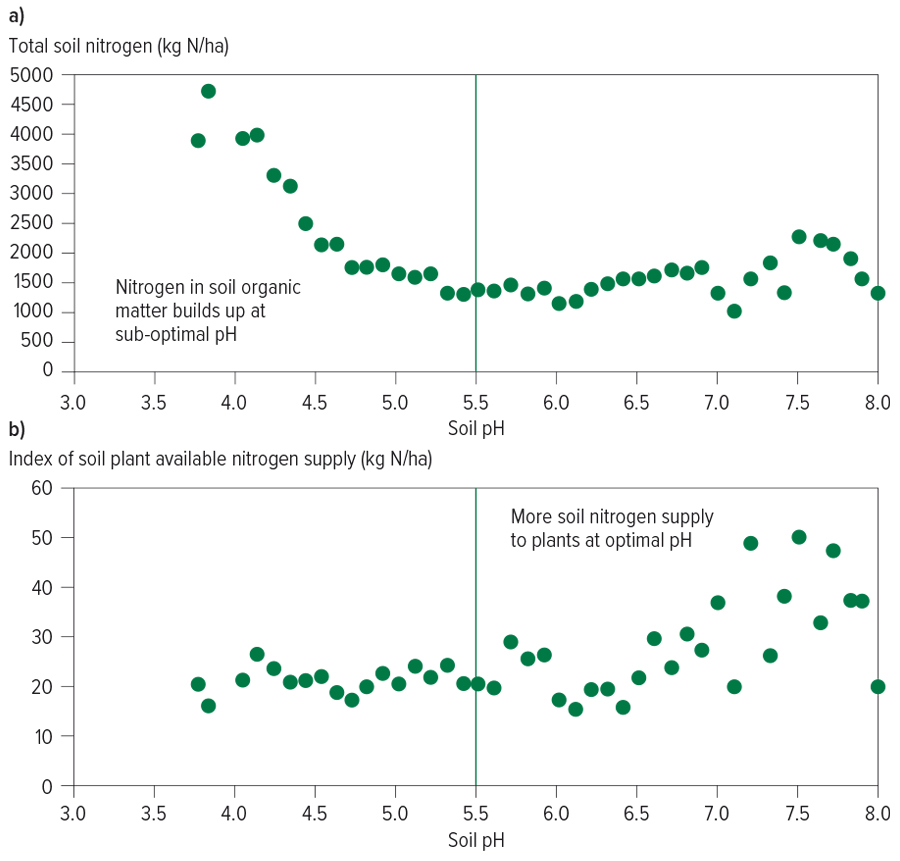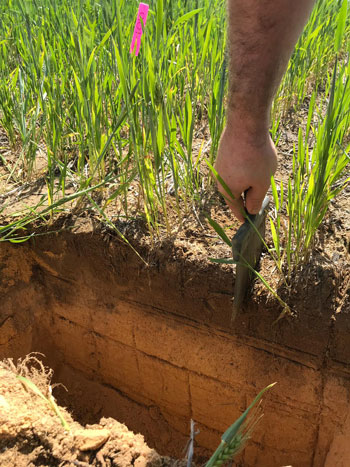Key points:
- Due to the combined effects of changing farming practices and climate, nutrient management strategies need to be continually updated
- Soil biota play a vital and complex role in nutrient cycles, that is challenging to unravel
- Detailed insights into nitrogen, phosphorus and potassium dynamics will be used to deliver improved fertiliser management strategies by the end of 2022
Long-term changes to cropping systems – together with changing climate – are driving the need to update the knowledge base used to guide nitrogen, phosphorus and potassium fertiliser decisions for the western region.
Using knowledge from a research program supported by GRDC, a SoilsWest team from the University of Western Australia (UWA), Murdoch University and the Department of Primary Industries and Regional Development will assess economic responses to management strategies for these macronutrients, update nutrient decision guidelines and roll out findings to the western grains industry.
Nitrogen insights
Work at UWA is focused on soil nitrogen processes that have the greatest impact on profit from fertilisers. Laboratory and glasshouse experiments are delivering an improved understanding of soil nitrogen supply by unravelling the interactions between climate, management and biological pathways in soil.
For example, Figure 1 shows how soil nitrogen storage (total soil nitrogen) is greater at low soil pH (in CaCl2). Acidity causes soil organic matter (which includes organic nitrogen) to accumulate as the soil biota have a lower efficiency for soil organic matter cycling at low pH. This means the soil organic nitrogen store builds up instead of being released by the soil biota to become plant-available (Figure 1a). At optimal pH values (more than 5.5), soil biota are more active. This leads to faster soil organic matter cycling and greater release of plant-available soil nitrogen (Figure 1b).
Figure 1: Relationship between soil pH and (a) total soil nitrogen and (b) plant available soil nitrogen in WA cropping soils. Note: the index of plant-available soil nitrogen supply is determined by a laboratory incubation.

Source: UWA
Phosphorus insights
To better inform phosphorus management, there is a need to:
(i) re-examine which soil properties are the best predictors of grain yield response to fertiliser phosphorus;
(ii) establish whether small amounts of starter phosphorus fertiliser would allow crops to unlock soil phosphorus;
(iii) test various options for optimising phosphorus fertility down the soil profile; and (iv) quantify the impact of crop sequence on soil phosphorus supply.
 Figure 2: Soil pits opened to take soil and root samples from the phosphorus placement trial at Tammin.Photo: Gustavo Boitt, UWA
Figure 2: Soil pits opened to take soil and root samples from the phosphorus placement trial at Tammin.Photo: Gustavo Boitt, UWA
Nuclear magnetic resonance phosphorus spectroscopy was used at UWA to characterise phosphorus forms in a range of soils. While the majority of phosphorus present in soil was in the inorganic phosphate form, organic phosphorus represented about 30 per cent of the total in cropping soils.
Work on phosphorus fertiliser placement suggests subsoil phosphorus supply is important. At a field trial near Tammin, where topsoil phosphorus levels were adequate but the subsoil was low (less than 10 milligrams per kilogram of Colwell phosphorus), there was no response to phosphorus drilled below seed. However, the wheat yield was almost 20 per cent higher in the ripped treatment (50 centimetres). with phosphorus placements at 20 and 40cm compared with ripping alone.
Long-term phosphorus-cycling trials are providing some insight into the effect of crop sequence on crop response to fertiliser phosphorus. In the second year (2019), wheat following wheat showed a greater yield response to phosphorus fertiliser than wheat following lupins at the Esperance site. These four-year trials will provide knowledge on how the cumulative effects of crop sequence and phosphorus fertiliser management influence plant-available phosphorus and grain yield.
Potassium insights
To better inform potassium fertiliser decisions, long-term field experiments are testing the effects of potassium fertiliser strategies and crop rotation on potassium availability and leaching. Leaching of potassium was detected after the first year at the Mingenew site.
Four grower case studies were investigated based on observations of windrow effects in crops in 2019 and 2020 on loam-textured soils (Figure 3a). Soil and plant testing on and off the windrow demonstrated the difference in growth was most likely due to potassium deficiency at three of the case studies. In 2020, strips of muriate of potash applied across the windrow showed a 30 per cent increase in oat yield in the inter-row (Figure 3a and b).
Figure 3a: Windrow effects in wheat crop at Meckering 2019, which was attributed to differences in soil potassium level (left). 3b: Cross strips of potassium chloride showing oat crop response to potassium supply between last year’s windrows.

Source: Murdoch University
Ultimately, the research will determine whether a higher level of soil potassium is required in loamy soils to avoid potassium deficiency, compared to sandy soils.
The forms of potassium in WA soils and the ability of different soil test methods for predicting plant-available potassium are also being examined. Soil has been collected from 21 soil types across the region, ranging from grey sands to red clay loams.
By the end of 2022, the team expects to deliver new recommendations to growers on nitrogen, phosphorus and potassium soil testing for loam-textured soils and appropriate fertiliser management strategies.
More information: Dr Craig Scanlan, craig.scanlan@dpird.wa.gov.au, 08 9690 2000; Professor Daniel Murphy, daniel.murphy@uwa.edu.au; Professor Richard Bell, r.bell@murdoch.edu.au; Professor Zed Rengel, zed.rengel@uwa.edu.au

























































